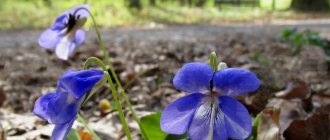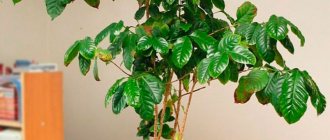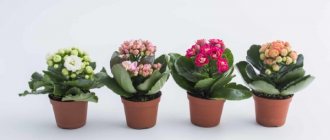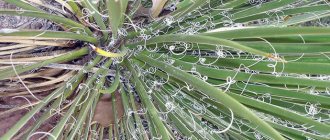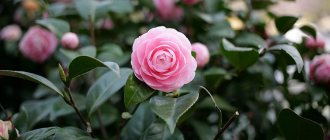Fertilizing plants
Foliar feeding can be more effective than root feeding, since liquid fertilizer sprinkled on the leaves is absorbed by the plant much faster. Most often, this feeding is used when a flower urgently needs to replenish its supply of nutrients.
Also, this method becomes the only available option in case of diseases or weakening of the root system. In addition, spraying with liquid fertilizer strengthens the stems and leaves, accelerates budding and makes flowering longer and more abundant.
Rules and methods of foliar feeding
Under a microscope, a leaf is a layer of cells tightly adjacent to each other; this is the epidermis. Some cells form stomata, through which the exchange of elements with the environment occurs. Under conditions of moisture deficiency, the stomata close, stopping evaporation of moisture. Usually they are also closed at night, so foliar feeding is effective only during the day!
The top of the leaf is covered with a skin called cuticle. It performs a protective, barrier function, and also retains the moisture the leaf needs inside. The cuticle is transparent, as it must allow sunlight to pass through for photosynthesis. Succulents have thicker skins because they typically grow in drier conditions. But foliar feeding will be useful both for decorative leafy inhabitants of your apartment and for succulents!
It is believed that the plant absorbs nutrients much faster through the leaves than through the roots. In addition to leaves, non-woody young branches are capable of absorbing elements. The procedure helps in the development of healthy foliage, prolongs flowering, prevents many diseases, including chlorosis, and increases immunity - resistance to fungal diseases and insect attacks.
This method comes to the rescue in cases where the roots are weakened and are not able to absorb nutrition from the soil. In addition, if the plant has recently been transplanted, or is sick, fertilizers at the root can be harmful! Spraying also treats many diseases and gets rid of pests.
- Do not perform foliar and root feeding at the same time; you need to alternate these two types of procedures. The first is recommended to be carried out every 4 weeks, making sure that at least 10 days pass between feeding “from below” and “from above”! Plants with large leaves (monstera, eucharis, croton, etc.) can be fertilized in this way every three weeks.
- The best time for foliar feeding is in the morning. At the time of fertilization, the leaves should not be dusty, otherwise stains will remain and the nutrients will not be absorbed properly! It is recommended to do useful spraying on the day of watering (simple watering without fertilizer) so that the soil does not dry out.
- Just like with root procedures, you need to respect the seasonality! The first fertilizer can be sprayed with the beginning of flower growth in the spring, then (if the plant is flowering) at the moment the buds appear and at the end of flowering. Keep in mind that during the flowering period you cannot fertilize so that drops do not fall on the petals!
- The inner surface of the leaf has a thinner cuticle, which allows it to better absorb moisture. Therefore, it’s a good idea to spray the leaves on both sides! Be careful with succulents that have leaf rosettes (aloe, echeveria, haworthia, sansevieria, etc.): moisture getting inside the rosette can cause rotting!
- Do not fertilize sick plants! If a pest or fungal disease is detected, the flower must first be cured and fertilized at the rehabilitation stage.
✿
Air humidification
For normal growth and development, plants native to countries with a tropical climate require high air humidity. If you cannot use a special household humidifier and are not ready to grow plants in a florarium, try to at least spray them 1-2 times a day.
Evaporating from the surface of the leaves, the liquid will increase air humidity, creating comfortable conditions for flowers. On sunny days, spraying should be moved to early morning or evening, otherwise it will lead to burns.
How to spray indoor plants correctly
We already know that spraying indoor plants is the most affordable and common way to increase air humidity in a room. But not all indoor plants can be sprayed equally. It is strictly forbidden to moisten some indoor plants, especially in winter.
In order to immediately understand which plants can be sprayed and which cannot, let us understand that plants with velvety (Saintpaulia, Gloxinia), clustered (peperomia, streptocactus), thin (pelargonium) or transparent (caladium) leaves are more sensitive to various rots. After all, fungi that cause rot multiply very quickly in stagnant droplets of water. For such plants, you need to choose another way to increase air humidity.
But tropical plants (orchid, codiaum, philodendron, bromeliad), plants with hard shiny leaves (ficus: rubber, Benjamin, variegated, clerodendrum, schefflera, calathea, alocasia, zamioculcas, azalea, dieffenbachia, arrowroot), ferns (nephrolepis, adiantum ), indoor coniferous plants (Elwoodi cypress) really need to spray their leaves. Moreover, they need to be sprayed on both sides - both the top and the bottom. This must be done because it is on the underside of the leaf that there are stomata through which the plant absorbs moisture, and also in order to warn the spider mite that we know about its existence and will not tolerate it in our company)), which also lives on the underside of the leaf.
To prevent spraying from leaving water marks on furniture or glass, try to spray the plants in the bathroom or sink. If you do spray plants on site, it is better to immediately wipe away traces of water droplets on furniture, glass, and large leaves. Over time, the water leaves whitish stains that are very difficult to remove.
The air humidity in the room will be approximately the same throughout the day if spraying is done in the morning and evening. But you need to make sure that before nightfall (when the lights go out), the plants are able to dry completely. Simply, without light, there is no photosynthesis, and plants cannot absorb moisture in any way, and this can cause disease.
In winter, if the plants are on the windowsill, you need to remember that the air temperature near the window is lower than in the room. Therefore, you should also be careful when spraying: a combination of high humidity and cold directly near the window can also contribute to the development of rot.
Spraying needs to be dosed. It is advisable to set the sprayer to the finest spray, otherwise large drops will quickly flow from the leaves into the substrate and it will become waterlogged. One more small addition: if the plants have already bloomed, then when spraying, try not to get on the flowers themselves, otherwise their decorative effect is lost and they fade faster. It would be ideal to cover them with a piece of paper while spraying.
You also need to remember that spraying should be done after watering, and not before. If you spray the plant before watering, moisture will still get onto the substrate and it will turn black, and it is not clear whether the plant has been watered or whether it still needs to be watered. If you water it twice in a row, you can flood the roots; if you don’t water it, the leaves will begin to wither and turn yellow.
In summer, especially in hot weather, you can spray indoor plants without any worries if the plants are not in direct sunlight. In some cases, it can cause a burn on the leaves. To avoid this, either keep the plant out of direct sunlight, or spray it in the morning and evening.
Treatment against diseases and pests
Spraying indoor flowers with ready-made insecticides (biological or chemical) is considered one of the most effective ways to combat diseases and pests. If you need to get rid of parasites, the treatment is carried out many times, alternating different drugs. This way you will avoid the adaptation of insects and are guaranteed to get rid of them.
In this case, you need to treat the curtains and the window sill on which the infected flower stood. But in order to choose the right treatment, it is important to find out what exactly your green pet is sick with.
Despite all the benefits of spraying, there are house flowers that can be harmed by this procedure. This applies to plants with translucent thin or velvety leaves.
Protecting plants from bacterial damage
There are no clear signs of this disease. In the affected areas, softening of the tissues of the stem, leaves, and buds is observed. The putrefactive process is accompanied by a characteristic odor.
Cause
of appearance
: waterlogging of the soil, high temperature and air humidity.
Treatment:
spraying with a 1% solution of Bordeaux mixture, replanting plants with mandatory disinfection of tools, dishes, and soil. It is better to destroy severely affected plants.
Compost
A good spring all-purpose organic fertilizer containing nitrogen can be obtained by composting plant waste. On average, compost from plants such as lupine and clover contains 0.4-0.7% nitrogen, and from green foliage - about 1%. When added to the soil, compost actively saturates plants with essential nutrients and makes the soil more water- and breathable.
Mature compost is applied to all crops at the rate of 15-20 kg per 1 sq.m. This valuable fertilizer should be applied during spring plowing (digging) of beds, in holes when planting seedlings, tubers, trees and shrubs, and also as a mulching material. The fertilizer is scattered over the surface of the ground and carefully dug to a depth of 5 cm.
In the spring, it is advisable to add compost to the greenhouse - 1-1.5 buckets per 1 sq.m to fertilize the surface layer of the earth or a layer of at least 25 cm as a warming bedding under the fertile soil layer.
- Compost - how to prepare it correctly and quickly
Find out how to properly prepare compost with your own hands and use it effectively in your garden.
Dracaena needs proper pruning
After the young dracaena is well rooted and has reached a height of about 30 cm, it should be trimmed. Using well-sharpened garden shears or a knife, remove the upper part of the flower (9-10 cm) so that leaves remain on the top. Thanks to this simple process, after about a month, a thickening will form under the cut site, from which new stems will subsequently grow.
Restore blood vessels after coronavirus: recommendations from a therapist
The Home Cleaning Basket and Other Simple Time-Saving Tricks
Bob is still at the peak of fashion. Ideas for fashionable and stylish bob haircuts
General characteristics and classification
Fungicides contain a different set of active substances. Therefore they are divided into two groups:
- biological;
- chemical.
Biological drugs (contact) are often used to prevent the disease. In some cases, they help eliminate the problem at an early stage of the infection. The substances contain spores of beneficial microorganisms. They are artificially released onto a culture or substrate, where they actively reproduce. As a result, pathogenic fungi simply die.
It is necessary to treat the plant with contact fungicides 3-5 times every 15 days.
Chemical fungicides (systemic) consist of components that penetrate inside the shoots and leaf blades. In addition, they are an excellent disinfectant for soil and seed. As a rule, systemic fungicides for indoor plants are diluted with clean water. And then, the crop is generously sprayed. Active substances disrupt the functioning of biochemical systems inside shoots and foliage. After a short time, pathogenic fungi die.
The destruction mechanism consists of a number of processes:
- respiratory failure of pathogenic microorganisms;
- stopping the division of fungal spores;
- creation of inhibitory substances;
- inhibition of energy metabolism;
- release of toxins.
All antifungal preparations for flowers are sold as powder, emulsion or tablets. Before use, it is advisable to read the instructions. Typically, fungicides are diluted with water and then poured into a spray bottle. Treatment is carried out according to the degree of the disease.
The interval between procedures is at least 10 days. Substances are also used to strengthen the immunity of weakened domestic crops.
Contraindications.
Even such a useful procedure is not indicated for all plants. Foliar feeding and spraying are undesirable and even dangerous for plants with pubescent leaves (violet, gloxinia and others) - there is a possibility of leaf burns - since water droplets linger longer on the hairs and roughness and can “attract” the sun’s rays, the likelihood of diseases and rot also increases . Of course, if you are confident in your knowledge and have extensive experience in growing these plants, you can spray, moreover, I know people who do regular foliar feeding for Saintpaulias, and the plants only benefit from this, but I repeat, experience is needed. I’m not taking any risks, because I don’t have that kind of experience with violets.
I also noticed that you need to very carefully spray only plants that you brought home or those that you have changed their place of “residence” if they are prone to falling leaves. For example, this applies to ficus Benjamin - one day I didn’t notice a draft, I moved it to another room and sprayed it - I lost some of the leaves. Moreover, in this case you need to be careful with foliar feeding.
Potassium sulfate (potassium sulfate)
In addition to nitrogen and phosphorus in the spring, plants can also benefit from potassium, which promotes resistance to diseases and adverse weather conditions. Potassium helps plants absorb nitrogen, increases the rate of protein formation, increases tissue strength, and reduces nitrate content.
Among the “spring” potassium fertilizers, potassium sulfate is most often used, where the content of the main substance is about 50% and there is no chlorine. When digging up the soil for vegetables and fruits in the spring, add 15-25 g of this highly effective fertilizer per 1 sq.m and then water the soil abundantly (granules can also be added dissolved in water).
Potassium sulfate cannot be used simultaneously with chalk and urea.
The fertilizer is suitable for most plants, but cruciferous plants and legumes “love it” the most. Crops need potassium fertilizers most when growing in calcareous areas, since the salt content in such soil is minimal. Potassium sulfate is also recommended for use on acidic soils - it helps regulate their acid-base balance.
- Potash fertilizers - what are they, their names, meaning and application
Let's figure out why fertilizing with potassium fertilizers is needed.
If plants need potassium fertilizing during the growing season, you can prepare a solution of potassium sulfate to spray them. To do this, 35-40 g of granules are dissolved in 10 liters of water, mixed until completely dissolved and the green mass is sprayed.
Provide your dracaena with a comfortable temperature
According to experienced gardeners, one of the most important things to pay attention to is the room temperature. Make sure that the thermometer does not exceed 28 degrees in summer. With the onset of winter, flower growers recommend placing dracaena in a cooler place for a couple of months. This way you will give the plant the opportunity to “rest” a little and gain strength. Just remember that the room temperature should not be lower than 8 °C.
Humates
Humic acids (humates) are a natural plant growth stimulator. Once in the soil, they activate the “work” of soil microorganisms, which significantly improves the structure of the soil, its water and air permeability.
When humates are absorbed by the roots or shoots of plants, metabolic processes are normalized in the cells of a green organism and the rate of protein synthesis increases. When planting seedlings, humates (watering at the root) improve the rooting process and accelerate its survival rate. In addition, seeds, tubers and cuttings can be soaked in a solution of humates before sowing and planting. Fruit and fruit and berry crops are sprayed with these products before leaves bloom, when flower buds are formed, at the beginning of budding and immediately after flowering.
Humates are available in dry and liquid form - they must be diluted before use strictly according to the instructions.
Before use, humic stimulants can be mixed with all nitrogen, potassium and organic fertilizers. And phosphorus fertilizers must be used separately with humates.
- What are humates and how to use them correctly
Secrets of effective use of humates in the garden.
How to spray water for spraying
Most home flower lovers do not think at all about spraying water. And this is a very important question! There are two methods:
- Water fog - the droplets are very small, evaporate quickly, the leaves almost never get wet, and the water does not flow down the stems into the soil.
- Spraying - drops of all sizes, both large and small, water consumption is large, water flows down the plant into the pot and onto the windowsill.
To humidify the air, you need “water mist”; it can be used regularly. For purification, fertilization, and chemical treatment, larger droplets are required—spraying.
In most cases, a regular plastic sprayer with a hand pump is used. It allows you to slightly regulate the flow of water, but it is still a splash. It is better to buy a special sprayer with different operating modes.
